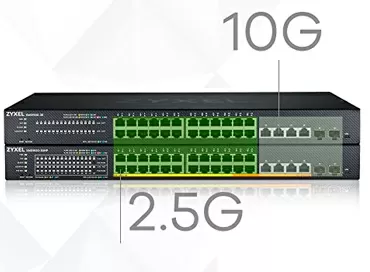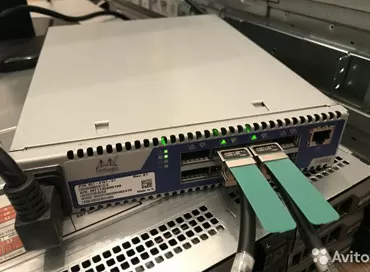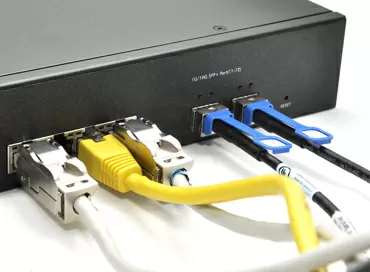10GBASE-T and SFP+. What is better for 10GBe networking?
The main direction of modernization of computer networks in recent years is the transition from a 1-Gigabit network to a 10-Gigabit one, not only in the data centers of enterprises, but also in the offices of small companies and even among home users. At the same time, the consumer is faced with the question of whether to use a traditional copper cable (BASE - T technology) or fiber with the use of SFP+ transceivers. On the one hand, it seems that nothing is cheaper than copper twisted pair, but on the other hand, SFP+ is a more common standard, and the more devices you have, the more noticeable the advantages of using optics.
10GBASE-T
The fourth generation of copper channel data transfer technology (10GB BASE-T) is designed to make the transition from a 1-Gigabit network to a 10-Gigabit network easy without laying new cables, but at the same time provide backward compatibility with existing network equipment. 10-Gigabit network cards with RJ45 ports can operate at speeds of 1 Gigabit, 100 Megabits, and 10 Megabits per second, so they allow for step-by-step upgrades to existing network connections, including patch panels, switches, and wires themselves.
Advantages of 10GBASE-T:
- Cheap cables
- Easy right-angle cable routing
- Ability to use connectors and patch panels
Disadvantages of 10GBASE-T:
- Relatively high power consumption of the controller
- Existing cable infrastructures using category 5 and 5e twisted pair may not be ready for 10 Gigabits
- The limited cable length is up to 100 meters, which makes it necessary to use switches with SFP+ Uplink connectors for laying the network in large buildings.
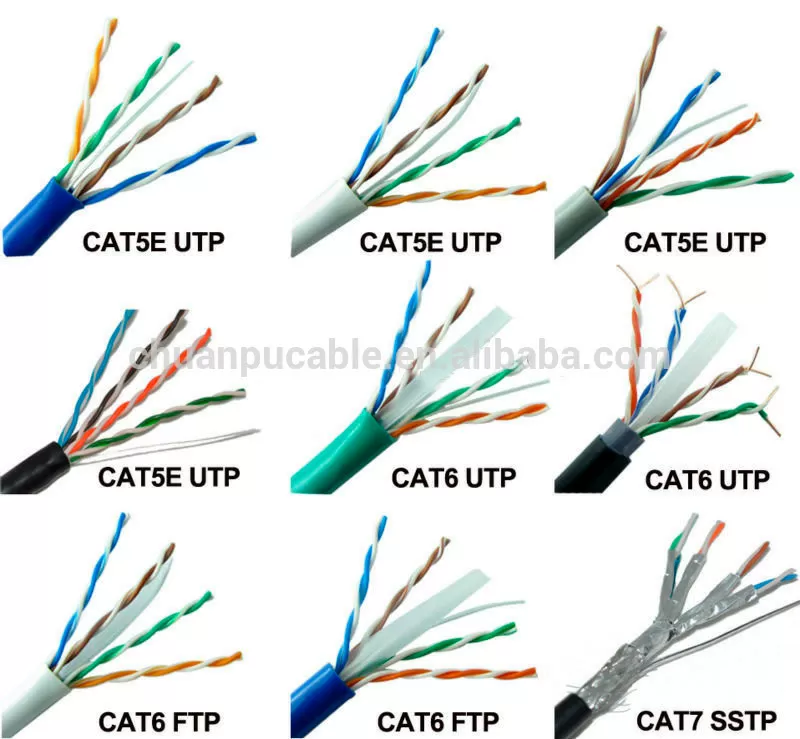
The main disadvantage of copper network cables is their low noise immunity and the dependence of spurious leads on the length of the conductor. To combat interference in copper cables, network equipment manufacturers recommend using category 6 and 6E cables with additional shielding and tighter twisting. Cat-5(e) cables usually have 1.5-2 turns per centimeter, while Cat-6 cables have more than two turns per centimeter. Within a single cable, each color pair also has a different turn length based on Prime numbers. The length of the coils is selected in such a way that the two different spiral will never coincide. If you use the most expensive shielded STP cables, such a network will become much more expensive than optical.
10G SFP+
When we say SFP+, we mean optics, but in fact it is an expansion slot standard in which an interface module is installed, a so-called transceiver consisting of an optical DFL/EML transmitter and an electronic unit that converts the light signal into an electronic one. If you need to connect two devices that have SFP + slots and are located at a distance of up to 15 meters, you can do without transceivers at all, and use direct copper cables (DAC cables). In fact, a DAC is a copper shielded Twinax cable, with SFP+ transceivers on both sides, devoid of the optical part. These cables are made all-in-one and usually have a length of 1.5 to 3 meters. It is not difficult to guess what causes such a short length - a weak processor of the network controller, created for an optical environment that is immune to interference.
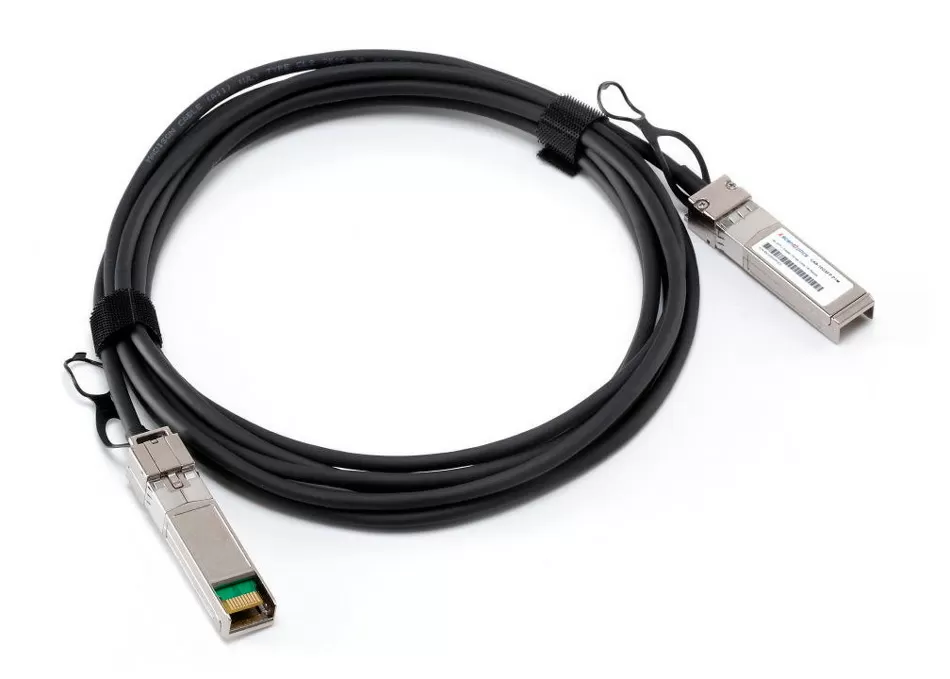
Optical SFP + transceivers can transmit data up to 120 Km away. There are also transceivers for connecting to a copper twisted pair, but this solution is not used in large quantities due to the high cost of these modules. The fact is that each such transceiver independently processes error correction algorithms, which means it has an ECC processor. Speaking about the traditional 10-Gigabit connection via SFP + transceivers, the following advantages and disadvantages can be identified:
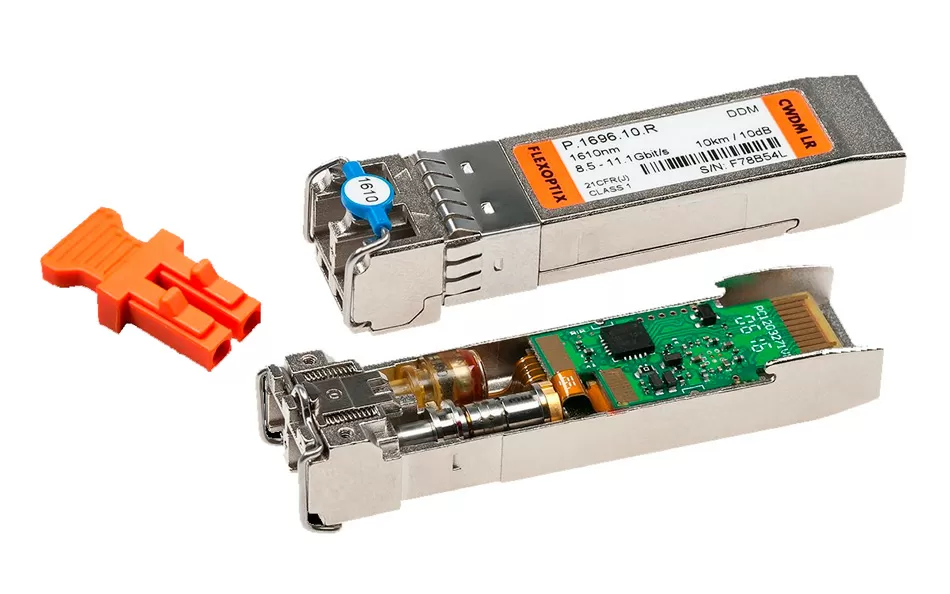
Advantages of optical SFP connection+:
- Low signal latency
- Lower power consumption for cable lengths up to 100 meters
- Cheaper network equipment
- Higher prevalence compared to 10GBASE-T
- Ability to use existing optical cables
Disadvantages of SFP+:
- At a distance of 5 to 100 meters, optics are more expensive due to the need to buy transceivers
- Complexity of using patch panels
10GBASE-T and SFP+ comparison
In General, if you buy equipment with network controllers installed (servers, storage systems, modern workstations and gaming computers), then 10GBASE-T with a twisted pair connection will be cheaper. With a cable length of up to 5 meters, you can often even use the cheapest category 5 cable - this is a great alternative to Twinax DACS. In conditions of absolute economy, you can connect the NAS directly to the work computer using a regular network cable without using network switches. In this regard, 10GBASE-T fully justifies its purpose as a cheap solution, but the picture changes when instead of two 10-Gigabit ports, you are dealing with two thousand.
| NIC | Intel X520-DA2 | Intel X710-DA2 | Intel X540-T2 | Intel X550-T2 | Intel X710-DA4 |
| Interface | SFP+ | SFP+ | 10GBASE-T | 10GBASE-T | SFP+ |
| Number of ports | 2 | 4 | |||
| Power Consumption Short Range, Wt | 6.5 | 4.3 | N/A | 11.2 | 6.2 |
| Power consumption Long Range, Wt | 6.6 | 4.5 | 13.4 | 13 | 5.5 |
| Power consumption, DAC, Wt | 5.8 | 3.3 | N/A | N/A | 3.6 |
| Annual power consumption 2000 portsLong Range, KWt*hr | 57816 | 39420 | 117384 | 113880 | 24090 |
Стандарт PHY, описывающий кодирование сигнала при передаче данных по медному кабелю, определяет время задержки приёма-передачи на уровне 2.6 микросекунд. SFP+ не использует кодировку пакетов, поэтому типичная задержка приёма-передачи составляет 300 наносекунд, то есть в 8.6 раз ниже. Чем больше портов на одном контроллере будет задействовано, тем больше будет разница в латентности. Так, уже на двух сетевых портах SFP+ будет иметь латентность 0.2 мкс, а 10GBASE-T - 5.2 мкс, уже в 25 раз.
This delay is already visible to the naked eye when you connect to an All-Flash storage system such as Synology FS3017. For iSCSI access, the response time between the 10GBASE-T interface and SFP+ can be up to 30%. in favor of the latter. Therefore, storage systems designed for transactional load and fast response times must be connected via optical cables. Below are the results of tests of the ASRock Rack EPC612D4U-2T8R motherboard with an integrated Intel X540-T2 network card when connected via iSCSI.
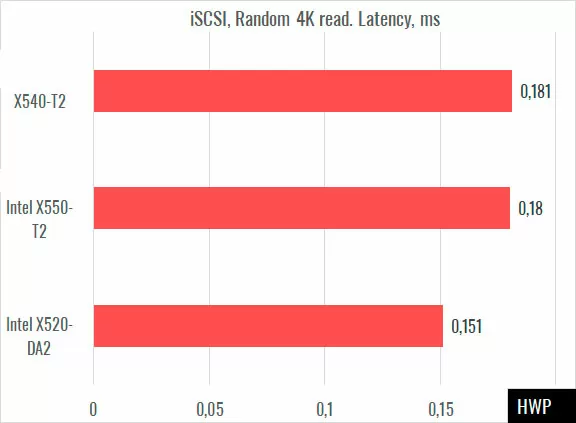
Another important advantage of an optical cable is that it is harder to listen to. It does not create a magnetic field, it is impossible to make a "tie-in", so from the point of view of protection from espionage, optics is out of competition.
Which interface should I choose for a 10-Gigabit network?
For the home and small office-copper cable, because top-end gaming motherboards and desktop NAS-s already have built-in 10GBASE-t 10-Gigabit controllers. You probably won't feel the difference in energy consumption even in 10 years.
For small data Centers of the enterprise - a conventional twisted pair is such a universal solution that in small server rooms with an area of about 40-50 sq. m., the cable length will be enough for any interconnects. Savings on branded transceivers will allow you to avoid asking about power consumption and delays for 10 years.
For large, fast-growing companies, there is no alternative to optics.
Michael Degtjarev (aka LIKE OFF)
23/08.2018










